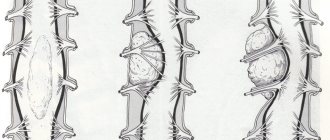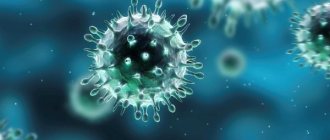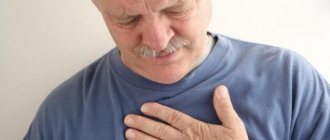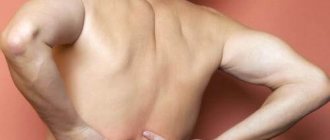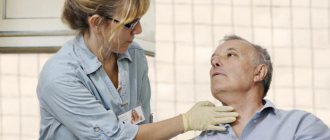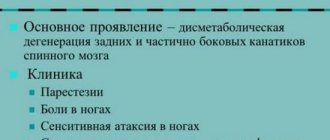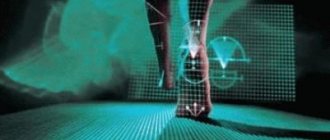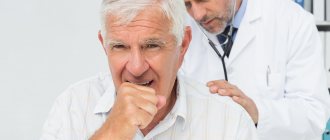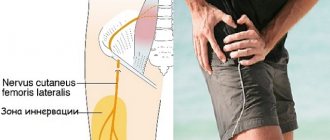Pain under the ribs in the left side occurs in acute and chronic diseases of internal organs, nerves, and muscles. In the projection of the left hypochondrium are the spleen, the left flexure of the colon, the fundus of the stomach, the tail of the pancreas, the left part of the dome of the diaphragm, intercostal nerves, the lower lobe of the left lung and the pleura. The nature of the pain syndrome helps to distinguish one disease from another, prescribe a diagnostic examination and determine treatment tactics.
The left side hurts under the ribs on the side, what could it be? We will discuss it in this material.
Types of pain on the side in the left hypochondrium
Pain sensations may differ in intensity, time of occurrence, dependence on physical activity, breathing or food intake. Some types of pain syndrome indicate an exacerbation of chronic processes in the body and require adequate therapy. Acute pain in the left hypochondrium with a high degree of intensity develops in emergency conditions. Such patients must be immediately transported to the hospital for surgery and resuscitation.
According to the intensity of the pain syndrome, there are:
- acute - constant intense pain, causing deep emotional experiences, poorly relieved by painkillers;
- chronic – periodic pain of low intensity, which is relieved with painkillers.
According to the nature of the pain sensations there are:
According to the source of pain, there are:
- visceral – occur as a result of inflammatory processes, injuries and bleeding from internal organs;
- muscular - arise as a result of inflammation or traumatic rupture of the muscles of the anterior abdominal wall or chest;
- neurological - occurs when the nerve trunks become inflamed;
- peritoneal – develop due to irritation of the peritoneum (“acute” abdomen);
- reflected - spread to the left hypochondrium from distant organs along nerve fibers and require differential diagnosis.
If acute, unbearable pain occurs, you must call an ambulance. In case of chronic pain syndrome, it is recommended to consult a doctor in a timely manner for diagnosis of the disease and treatment.
Symptoms
Intercostal neuralgia on the right side is indicated by a specific clinical picture:
- loss of sensation on the right side of the chest;
- pain lasts from 20 seconds to several minutes, the specific localization of discomfort depends on the damage to a particular nerve. With pathology on the right, pain is felt in the region of the heart;
- discomfort can spread to the shoulder, arm. In some cases, patients complain of discomfort in the lower back and shoulder blade;
- heart rhythm is disrupted;
- during breathing, coughing, sudden turns of the body, chest discomfort intensifies;
- with right-sided neuralgia, the victim has a specific posture: the spine is curved to the left to reduce the load on the damaged area of the ribs;
- breathing problems (shortness of breath occurs against the background of shallow breathing due to sharp pain during a full inhalation);
- sleep disturbances, absent-mindedness, decreased performance. These signs are caused by oxygen starvation of the brain against the background of shallow breathing and being under constant stress due to unpleasant sensations.
Note! Many people confuse the above symptoms with heart disease. A distinctive feature of intercostal neuralgia is the lack of improvement at night. Only analgesics and warm compresses can relieve pain.
In some cases, victims complain of other signs of intercostal neuralgia:
- pallor of the skin in the area of pinched nerve endings;
- spasms of nearby muscles;
- increased sweating, very rarely - increased body temperature.
It is difficult to independently determine the cause of the malaise; seek help from professionals. Based on the test results, the doctor will make a diagnosis and prescribe the necessary therapeutic course.
Spleen diseases
The spleen is a hematopoietic organ. Inflammation is characterized by a rapid increase in size of the spleen (splenomegaly), and with injuries there is a high risk of rupture of the organ capsule with heavy bleeding. Splenomegaly occurs with mononucleosis, acute and chronic forms of leukemia, anemia, hypersplenism, hepatitis and cirrhosis of the liver, ARVI.
Diseases of the organ are characterized by bursting, pressing pain in the left hypochondrium, which does not depend on physical activity and food intake. When the spleen ruptures, a bluish area forms around the navel, dizziness, nausea, and weakness appear. The pain at the time of rupture of an organ of a traumatic or infectious nature is acute and cutting in nature.
Treatment of pathology
Due to the seriousness of the pathology and the presence of significant physical discomfort, treatment of intercostal neuralgia should be carried out strictly under the supervision of a physician. Only a neurologist can prescribe optimally suitable medications that can effectively eliminate the pain and inflammatory processes that accompany a pinched nerve.
Before treating intercostal neuralgia, based on the general condition of the patient, the doctor selects the type of therapy. If the disease does not cause critical discomfort, it can be eliminated using conservative methods. A disease of moderate severity, as well as one that causes serious discomfort, requires the use of medications.
Only in rare cases, the symptoms and treatment of intercostal neuralgia on the right take an extreme form. So, in case of extensive pathology, neurosurgeons perform an operation, during which the damaged nerve is most often removed.
General therapeutic recommendations
Regardless of the patient's symptoms and treatment, there are general guidelines to promote a quick and effective recovery. These include:
- mandatory patient compliance with bed rest. At the same time, to reduce the pain factor, the bed should be flat and firm;
- Regularly applying a warm, dry compress to the right side of the chest. It is allowed to use mustard plasters applied to the site of pain;
- the use of natural sedatives;
- attending light warming massage sessions.
Since pain symptoms when the intercostal nerve is pinched on the right tend to increase significantly after drinking alcohol, it should be completely excluded for the patient. In addition, stressful situations, including physical and intense mental stress, also provoke increased pain. Therefore, they also need to be avoided.
Use of medications
The use of medications is performed when pain is of significant intensity. In this case, the main therapeutic method is Novocaine blockade. Thus, the pain factor is significantly dulled and does not spread to other parts of the body. Analgin-based drugs are also widely used, as they are very effective in eliminating pain symptoms. However, the frequency of their use should not exceed 4 doses per day.
In cases where intercostal neuralgia on the right becomes chronic, stronger medications are used. Most often these are antidepressants and pills with antiepileptic effects. It is these drugs that produce the effect of erasing pain memory.
For general relief of the condition of a patient with a pinched nerve in the right side, muscle relaxants are often prescribed. In some cases, during drug therapy, non-steroidal drugs are used to provide an anti-inflammatory effect. And in the presence of swelling resulting from pinching of the intercostal nerve, drugs with a diuretic effect, as well as venotonics, are used.
Traditional medicine methods
Before treating intercostal neuralgia with folk remedies, you should definitely consult with your doctor about the safety of using specific methods and means. It is also worth remembering that natural therapy, although it produces significant positive effects, cannot be used as the main treatment.
In folk medicine, warm compresses and rubbing are widely used to eliminate pain symptoms and relieve inflammation. According to the recipes, a compress prepared from the leaves of indoor geranium helps relieve pain within 1-2 hours. To prepare it, you need to apply freshly picked leaves to the sore spot, and put a linen cloth on top of them. After this, you need to bandage the sore spot with a compress and insulate it with a woolen scarf.
Warming up with the use of boiled eggs, which are applied hot to the site of pain and held there until it cools completely, is also very effective. However, when using this method, for safety reasons, you should not apply the hot egg directly to the skin. It is better to perform the procedure through clothing or a diaper.
Intestinal diseases
Pathology of the small intestine leads to visceral or referred pain in the left side. A tumor of the left colon in the later stages of the disease causes aching pain that intensifies 2-3 hours after eating. The pain syndrome occurs against a background of weakness, weight loss, and aversion to food. Enteritis is characterized by periodic dull pain in the left side, which is accompanied by constipation and diarrhea, a feeling of transfusion in the abdomen, and increased gas formation. With ulcerative colitis and Crohn's disease, blood appears in the stool.
Rehabilitation means
The absence of pain after treatment does not mean that the patient can freely return to their previous lifestyle. During the first time after drug therapy, the patient must refrain from physical activity and maintain the principles of a healthy lifestyle for as long as possible.
For successful and rapid recovery of the body after the occurrence of intercostal neuralgia on the right, it would not be superfluous to use special rehabilitation means. These include:
- exposure to the right side of the chest with an ultraviolet emitter;
- acupuncture procedure;
- laser therapy;
- attending therapeutic sessions with an osteopathic doctor.
In addition, it is recommended to consume B vitamins, which have a general strengthening effect on the body.
Stomach diseases
Gastritis and gastric ulcer cause pain in the epigastric region and in the left hypochondrium. In the case of gastritis, the pain is stabbing, drilling, shooting, and intensifies after eating spicy and fatty foods. Characterized by a feeling of heaviness in the stomach, belching rotten or sour, heartburn, nausea.
Peptic ulcer disease manifests itself with hunger and night pain (increased discomfort on an empty stomach), after eating, the pain syndrome decreases. Characterized by vomiting mixed with blood, loss of body weight, and asthenia. Perforation of the ulcer is accompanied by dagger-like acute pain, vomiting, severe weakness, retardation of consciousness, and muscle tension in the anterior abdominal wall. This is an acute condition requiring emergency medical attention and surgery.
Stomach cancer causes aversion to food (usually meat products), constant aching pain in the epigastrium and left hypochondrium, weight loss, weakness, and anemia. When a tumor grows into large nerve trunks, an acute pain syndrome occurs, which can only be relieved with narcotic analgesics.
Diagnostics
At the initial appointment, the victim will be carefully examined, anamnesis will be taken, and the area of discomfort will be palpated.
Instrumental examinations play the main role in making a diagnosis:
- radiography. Pictures are taken in several projections to assess the condition of bone structures, which makes it possible to identify the presence of pathological processes and damage;
- Ultrasound. Used to exclude diseases of internal organs;
- CT. It is carried out together with myelography. A contrast agent is injected into the victim’s spinal canal, which allows the physician to assess the condition of the soft structures of the spine (nerve roots, spinal cord);
- MRI. The study is designed to assess the condition of the soft tissues and vessels that surround the damaged area of the ribs;
- contrasting discography. A special contrast agent is injected into the intervertebral disc and the extent of its damage is studied.
A patient's blood test will help rule out infectious pathologies and endocrine diseases. In some situations, the patient is sent to specialized specialists (endocrinologist, infectious disease specialist and others).
Pancreatic diseases
Inflammation of the pancreas is called pancreatitis. Chronic pancreatitis causes indigestion and periodic pain in the left side. Characterized by diarrhea, greasy stools with lumps of undigested food, and flatulence. Pain of a stabbing, bursting, shooting nature occurs 1-1.5 hours after eating. Often the pain syndrome becomes girdling - spasmodic pain compresses the left and right hypochondrium in a “ring”.
Acute pancreatitis is a dangerous condition with a high mortality rate (up to 60%). Acute pain of high intensity appears, nausea, vomiting without relief, increased body temperature up to 39 degrees, chills, loss of appetite, loose, frequent stools. The disease usually develops after heavy intake of spicy or fatty foods or alcohol abuse. If acute pancreatitis occurs, the patient must be urgently taken to the hospital for diagnosis and treatment.
Pancreatic cancer is asymptomatic for a long time. Sometimes loose stools, nausea, and vomiting appear after a heavy meal. The first sign of the disease is often yellowing of the skin and sclera as a result of compression of the bile ducts by the tumor. Pain in the left hypochondrium occurs in the later stages of the disease, constantly or periodically. The pain syndrome is dull, bursting, does not depend on food intake, less often intense - due to the germination of a tumor of the nerve trunks. Often accompanied by vomiting and refusal to eat.
Intercostal neuralgia on the right: symptoms and treatment
Intercostal neuralgia or thoracic radiculitis (thoracalgia) is an insidious neurological disease associated with damage to the intercostal nerves.
It is expressed by a pain syndrome, which in terms of intensity is in third place after labor pains and renal colic.
It mainly affects people of mature age, and is practically unknown to children and adolescents.
Between the ribs there are 12 pairs of intercostal nerves that arise from the roots of the spinal cord.
They contain different types of fibers responsible for movement and sensitivity.
When inflammation, compression or irritation occurs, a nerve impulse occurs, which is transmitted to the spinal cord and then to the brain. The response to this is acute pain.
What is intercostal neuralgia?
Neuralgia literally means “pain along the nerve,” i.e. in the intercostal nerves. This is not an independent disease, but a designation of a pathology that occurs in the spine for various reasons . The resulting pain is intense and painful, with a predominant localization in the sternum.
Dystrophy of cartilage tissue or osteochondrosis does not cause intercostal neuralgia. The spinal disease itself is not accompanied by paroxysmal, persistent pain, but its complications may well be the cause of this pathology.
There are radicular and reflex neuralgia . In the first case, the spinal nerve roots are irritated, and pain in the spine radiates to the sternum. And with reflex pathologies, pain appears when the intercostal muscles tense and contract. According to the location, the disease is divided into right-sided and left-sided.
In any case, intercostal neuralgia is a sign of developing pathologies of the spine , so it is very important to promptly recognize its symptoms on the right and left. Deciphering such signals given by the body is important for further diagnosis and prescribing appropriate treatment.
Causes of intercostal neuralgia on the right
Since intercostal neuralgia is a syndrome of a number of pathologies of the spine and nervous system, its causes are degenerative, inflammatory or tumor in nature, and are always associated with a specific disease.
| Causes: | Factors causing intercostal neuralgia: |
|
Symptoms and diagnostic features of intercostal neuralgia on the right
The signs of intercostal neuralgia on the right are typical: severe pain, aggravated by inhalation and exhalation, coughing, sneezing, uncomfortable posture, and physical activity. Local pain is more common, its localization is easy to determine: intercostal spaces, lower back, shoulder blades .
It also increases with palpation of the corresponding areas of the ribs and spine. Severe attacks can continue for a long time.
This pathology is also characterized:
- Trembling and twitching of the intercostal muscles. They can be easily noticeable and strong or barely noticeable. This reflex reaction to pain occurs due to the fact that the motor areas of the nerve fibers are affected or due to a disruption in the blood supply to the nerve tissues.
- Numbness of the skin, tingling and burning near the affected nerve due to impaired sensitivity of part of the intercostal nerve.
- And if the autonomic part of the nerve is located, sweating, a change in color of the corresponding part of the skin (pallor, redness or cyanosis), a feeling of cold in this area and a local decrease in temperature are observed.
- A forced position of the body when the spine and chest are slightly tilted to the left, protecting the right side from compression of the nerve endings.
- Sleep disturbances due to constant and unbearable pain.
- Poor filling of the lungs, resulting in rapid and shallow breathing and shortness of breath.
Why is intercostal neuralgia on the right dangerous?
The danger of right-sided neuralgia is its insidiousness, because it often disguises itself as other diseases . It is not always immediately recognizable and is often confused with angina pectoris and other heart ailments.
How not to confuse it with other diseases?
There are several signs that you need to focus on when differentiating neuralgia:
- With heart problems, acute pain sensations are not so long-lasting, they last up to a maximum of a third of an hour.
- Nitroglycerin helps relieve this suffering.
- Heart pain covers a wide area, usually including the heart, arm and shoulder.
- The nature of such pain does not change with movement, coughing, sneezing, and it is not associated with breathing.
- In this case, the heart rhythm is still disturbed.
It is even easier to confuse neuralgia with a stomach ulcer ; the symptoms, intensity, duration of pain and its nature are similar in both cases. The difference is that in case of stomach disease, no-spa comes to the rescue, relieving pain and spasm, but in case of intercostal neuralgia this remedy is useless.
But in any case, for acute pain, home treatment is contraindicated; it is not effective, but by getting carried away with it, you can waste time and thereby contribute to the complication of the disease.
: “How to distinguish intercostal neuralgia from heart disease?”
Treatment
A neurologist is involved in the treatment of intercostal neuralgia , and in case of serious pathology, when it comes to the patient’s life, it is necessary to involve a neurosurgeon. Therapeutic treatment is designed to eliminate the causes of the syndrome that caused the pinched nerve.
In case of acute pain, strict bed rest is required; a shield is placed under the mattress. It is also necessary to use dry heat to warm the right side of the chest. For this purpose, heating pads, compresses, and mustard plasters are used.
Massage using warming and anti-inflammatory ointments is effective. You cannot do without painkillers with a sedative effect. Disease-provoking stress, physical strain, and alcohol are excluded. What drugs help with right-sided intercostal neuralgia?
Drugs
For the conservative treatment of neuralgia, the following groups of drugs are used::
| Group | Description of action | Name of drugs |
| Novocaine blockade | Relieves pain | Novocaine. Lidocaine and other anesthetics are also used. |
| Nonsteroidal anti-inflammatory drugs | They have an analgesic and anti-inflammatory effect. Available in tablets, injections or suppositories. |
|
| Muscle relaxants | Used in combination with NSAIDs. Relaxes muscle and nerve spasms. | |
| Diuretics | Used to eliminate tissue swelling. | |
| Warming ointments | To normalize blood circulation and warm up muscles | |
| Sedatives, usually of plant origin | Helps relieve nervous tension and normalize sleep |
|
| Prescription of vitamin complexes is practiced, B vitamins are especially necessary | Helps restore the structure of nerve fibers and their impulse conductivity |
|
Surgery
Surgical treatment is practiced in exceptional cases, when there are large areas with compression pathology of the nerve roots, causing intolerable pain.
Exercise therapy and massage
Physiotherapy and massage help relax muscles. In the acute period, when the patient needs absolute rest, they are contraindicated . They are not used for tumors, tuberculosis, diabetes and hypertension with a risk of heart attack.
The purpose of therapeutic massage is to improve metabolic processes in the muscles of the paravertebral corset, their activation, pain relief, reduction of tissue swelling, and removal of pinched nerve roots and fibers. It is important to carry it out with the help of an experienced specialist who takes into account the individual characteristics of the disease.
A course of massage treatment consists of 10 sessions lasting up to half an hour , preferably carried out in the first half of the day. During the procedure, the patient lies on a hard couch on his stomach. First, the healthy part of the back is massaged, and then the problematic part; if the pain is bilateral, then they start with the less painful side.
Intercostal neuralgia is also treated with gymnastics, yoga or swimming . A set of exercises to strengthen the muscle corset, restore muscles and stretch the spine is developed by an experienced trainer.
These classes are carried out during the rehabilitation period; if discomfort occurs, they are stopped and resumed after a short break.
Before they begin, a warm-up is required, consisting of shaking the arms and legs, shoulders, turning the head, and slightly bending. The load increases gradually, movements are smooth, without jerking or pain, with a relaxed back. It is important to do exercises daily.
And they are simple:
- Take a deep breath, hold your breath and exhale slowly.
- Slow tilts left and right.
- Turns left and right with your arms bent at chin level.
- Squats supported by a chair with a straight back.
- Backbends while sitting on a chair with your hands behind your head.
- Bending the head and legs, lying on the stomach and others.
Treatment at home
Traditional methods are only auxiliary; they help relieve pain, reduce inflammation, but do not cure.
These are compresses, ointments, infusions, herbal decoctions.
Most often used:
- decoctions of lilac, chamomile, elderberry and mint buds;
- baths with sage, horse chestnut, oak and spruce bark;
- compresses with flaxseed or horseradish and radish juice.
The use of natural stimulants - mumiyo and propolis - is effective . They help restore the body.
Recovery prognosis
The prognosis for the course of the disease depends on its cause ; for tuberculosis and tumors, cure is problematic, and degenerative-dystrophic changes in the spine cannot be completely cured.
With timely diagnosis and treatment of the underlying disease, a significant improvement in the condition occurs for a long time. In many cases, complete recovery is possible.
Conclusion
Right-sided intercostal neuralgia is not a separate disease, but a syndrome of various spinal diseases associated with intense pain.
She is dangerous because:
- The pain is constant, and it is impossible to get rid of it without comprehensive treatment of the underlying disease.
- It has many common symptoms with heart and gastrointestinal diseases.
- It is difficult to diagnose, so patients often waste time on self-medication.
- With untimely diagnosis and unqualified treatment, serious complications are possible - dystrophy and dysfunction of the nervous tissue due to oxygen starvation, limitation of movements and even respiratory arrest.
Source: //SpinaTitana.com/nevralgiya/mezhrebernaya/mezhrebernaya-nevralgiya-sprava.html
Muscle disease
Muscle inflammation - myositis can be accompanied by pain in the left side. The pain syndrome is shooting and cramping, intensifies when muscle fibers are stretched while bending in the opposite direction. When palpating the affected muscles, a painful lump is determined. Inflammation of the diaphragm most often occurs with congenital or acquired hernias. Dull or burning pain develops when food passes through the esophagus and bends the body after eating. Pain syndrome usually occurs behind the sternum, but can spread to the left hypochondrium.
Prevention of pathology
A very important point in preventing pinched nerves in the right side is to avoid hypothermia. In addition, it is useful to do a small warm-up every hour when staying in the same position for a long time.
In general, the basic preventive measures designed to protect against the occurrence of pinched intercostal nerves are almost identical to the general recommendations for maintaining a healthy lifestyle. This means getting enough sleep, regular light physical activity and proper nutrition.
Heart diseases
During myocardial infarction, pain occurs in the left half of the chest, between the shoulder blades, and radiates to the arm on the affected side. The atypical course of the disease leads to referred pain in the left hypochondrium. Sharp, cramping, shooting pains in the left side of high intensity, shortness of breath, fear of death, palpitations, numbness of the left arm are noted. Taking nitroglycerin or painkillers does not bring relief.
If pain occurs in the left hypochondrium, you should consult a doctor for examination and treatment. Timely consultation with a specialist reduces the risk of disease progression and complications.
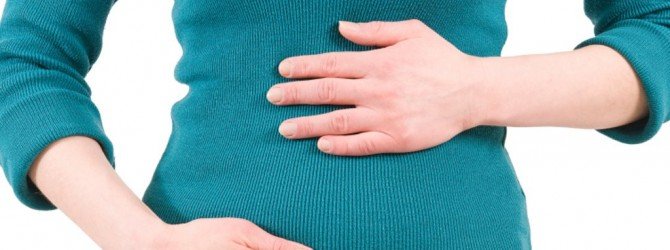
Pain on the left under the ribs is not only a fairly common phenomenon, but also very deceptive.
The fact is that most of us, having felt such uncomfortable sensations, immediately attribute them to heart problems and start drinking Validol.
However, pain under the ribs on the left side often indicates completely different, but no less serious diseases.
Disease prevention
To prevent intercostal neuralgia on the right, you should adhere to the following rules:
- Eat properly and balanced . Eat only healthy foods, eat more vegetables and fruits. Avoid processed foods, preservatives and high-calorie foods.
- Drink more liquid , in the form of juices, compotes, fruit drinks, herbal teas, still water. Remove coffee and strong tea.
- Stop drinking alcohol and smoking.
- Play sports , do exercises in the morning. Exercises should be aimed at strengthening the back muscles.
- To live an active lifestyle .
- Avoid casual sex , protect yourself with condoms. (This will prevent the occurrence of a herpes infection.)
- Treat all infectious and viral diseases in a timely manner.
- Undergo preventive medical examinations .
If you follow these simple rules, you can avoid such a disease. If you feel any pain in the rib area, you should immediately seek medical help. Timely treatment will give good results.
Nature and intensity of pain
The nature of the pain will help you determine which organ should be treated and which doctor to see.
1. A dull aching pain under the ribs on the left indicates:
- gastritis or gastric ulcer. May be accompanied by vomiting, which brings relief, decreased appetite and diarrhea;
- stomach cancer. May be accompanied by a sharp weight loss, weakness, anemia, symptoms similar to toxicosis in pregnant women (for example, the appearance of an aversion to meat);
- enlarged spleen;
- diseases of the pancreas. May be accompanied by fever, nausea or vomiting.
2. Sharp pain in the left hypochondrium may be a sign of:
- stomach or duodenal ulcers. May be accompanied by heartburn, vomiting and constipation;
- nervous overstrain.
3. Stitching pain on the left under the ribs indicates :
- lung diseases. Especially if it worsens with coughing and deep breaths (pneumonia, inflammation, tuberculosis or cancer of the left lung). May be accompanied by fever, shortness of breath, constipation and general intoxication of the body;
- ulcer of the duodenum or stomach. May be accompanied by nausea and vomiting;
- heart diseases;
- vegetative-vascular dystonia.
Neuralgia in the right side. Intercostal neuralgia on the right. Symptoms
The fact is that the rib muscles have a huge number of nerve endings, thanks to which the body is able to perform various mobile functions.
When a nerve is pinched or inflamed, pain is provoked, which indicates the presence of this disease. It is extremely difficult to recognize intercostal neuralgia on your own, since its symptoms are similar to many other diseases not related to the sternum. We will discuss further how to correctly diagnose the disease and what to rely on in this process.
Why does pain occur?
First, it is worth pointing out that intercostal neuralgia itself is not a symptom of a specific disease, but is nothing more than a pathological condition indicating the presence and need for treatment of more serious diseases. Reasons for appearance
Corresponding pain in the rib area may include the following:
- in chronic form;
- the presence of tumors and neoplasms in the ribs and sternum;
- or their displacement relative to the axis;
- fractures of the ribs or sprains of the muscle fibers that regulate their mobility;
- tick-borne encephalitis, which causes general damage to the nerve fibers of the body;
- intoxication of the body;
- spinal muscle hypertrophy;
- viral infections that remained for a long time without proper treatment.
Prerequisites
The following processes can also lead to the appearance of intercostal neuralgia:
- frequent stress;
- lack of proper rest;
- prolonged sitting;
- alcohol abuse and smoking;
- problems in the functioning of the endocrine system (especially the presence of diabetes);
- metabolic disorders, as well as lack of absorption of calcium and magnesium;
- inhalation of vapors of toxic substances, leading to the accumulation of metal salts in tissues;
In fact, there may be many more reasons for the appearance of pain. It all depends on the person's lifestyle
, his habits and work characteristics.
Symptoms of right-sided neuralgia
In medicine, any neuralgia has a “subtext”, speaking of a more serious disease. It is not so easy to differentiate among most diseases that have identical symptoms. But there are several basic principles that help you be sure that you have the disease.
Main symptoms
The main symptoms include the following:
- The pain appears suddenly
and also disappears suddenly. On the right side of the chest, it may become worse with movement or even with inhalation of air. - It has intensity, that is, it can disappear
at rest and become more active during physical activity. - When palpating the right side, the pain intensifies and persists for some time even at rest, without radiating to other areas.
- With a sharp cough, sneezing and an unsuccessful turn, cramping pain may occur, which does not allow you to quickly and painlessly return the chest to its natural position.
- May appear in wet, rainy weather
and disappear completely during the summer months. - Does not depend
in any way on fluctuations in blood pressure. - Does not appear in childhood or school age.
Right-sided neuralgia occurs in practice much less frequently than left-sided neuralgia, but it is easier to eliminate its symptoms in this area. In the area where a disruption in the functioning of the nerve is detected, there is usually a complete or partial loss of sensitivity
skin.
Additional symptoms
In addition to the main ones, there are also additional symptoms that manifest themselves on a subconscious level. These include four main provisions:
- Body position. The spine and chest take a slight tilt to the left side, providing the right with minimal compression of the nerve endings.
- The area takes on a shade that is clearly different in color from the main one. Impaired functioning of nerve endings provokes a lack of oxygen in nearby tissues, causing anemia. Sleep disturbance.
- Due to the manifestation of pain, a person cannot sleep normally, and as a result, the pain only accumulates and becomes unbearable, forcing the patient to go to the doctor for help.
- Lack of full filling of the lungs. A person instinctively begins to breathe more often, but the depth of his breaths is insignificant. This causes shortness of breath.
Together with the symptoms and the collection of primary tests, it is possible to diagnose intercostal neuralgia on the right side, distinguishing it from other ailments.
How to distinguish pain and correctly describe your condition?
Many patients who come for an appointment cannot correctly describe the nature of the pain, based only on its location. This greatly complicates the process of collecting primary information and can lead to incorrect diagnosis.
. Therefore, it is worth knowing what kind of pain is typical for intercostal neuralgia of the right-sided segment of the chest.
- Direction of pain. A pinched nerve usually provokes girdling pain, which is directed along the contour of the rib, without radiating to any other areas.
- Nature of pain. It can be sharp, sharp and burning, or blurry. Here it is important to take into account the fact under what conditions it intensifies (with palpation, with inhalation, with movement). This indicator is key and helps the doctor distinguish diseases of internal organs from intercostal neuralgia.
- The real cause of pain. The doctor will definitely ask at what point the discomfort began. It is important to remember in detail the previous days and honestly say, after which the illness began to remind itself.
- The presence of chronic diseases of the bones of the spine.
By assessing your condition and correctly describing your sensations, you can not only make the work of specialists easier, but also speed up the healing process, saving yourself from unnecessary and lengthy diagnostics.
Features of right-sided neuralgia
Girdle pain on the right side is less dangerous, since it completely eliminates the risk of pre-infarction and other serious diseases of the cardiovascular system.
However, in this part of the body, healing slows down noticeably, for which there are no full scientific explanations.
There are situations when nerves are pinched in two planes simultaneously, preventing a person from fully carrying out natural processes.
The use of painkillers is not always effective, since you need to look for the true cause of pain and neutralize it. For this purpose, diagnostics
, which can be produced both superficially and in more detail using high-precision equipment.
Diagnosis and treatment
The disease can be diagnosed in four stages:
- Collecting anamnesis based on visible symptoms.
- Palpation of the diseased area and recording of reactions during palpation.
- Exclusion of diseases of internal organs.
- Presence of chronic bone diseases.
Usually symptoms and palpation are sufficient, but in rare cases an ECG and x-ray
the affected area in order to exclude all possible causes of pain.
the goal is to eliminate the cause
intercostal right-sided neuralgia. In this regard, treatment is selected individually, which is entirely based on the identified concomitant illness. The following drugs can be used in treatment:
- painkillers - can reduce the sensitivity of nerve fibers to pain;
- chondroprotectors – take care of the restoration of bone and cartilage tissue;
- injections that relieve acute pain - are injected directly into the source of pain, completely or partially eliminating it;
- ointments and rubs that relieve muscle pain.
In addition, exercise therapy
which is carried out exclusively under the supervision of specialists.
Physiotherapy
will also not hurt , the techniques of which will return the body to its former painless mobility in the shortest possible time.
Prevention
It's no secret that prevention is always easier than cure. And not only easier, but also cheaper. Preventive measures are as follows:
- maintaining a healthy lifestyle with exercise at least three times a week;
- refusal of unhealthy high-calorie foods and carbonated drinks;
- when working sedentarily, do a short warm-up every hour, changing the location of the body;
- prevent extensive infectious and viral tissue damage;
- Having chronic diseases of bones and muscle fibers, undergo timely medical examinations.
Thus, right-sided neuralgia is not an independent disease
, but has symptoms that are often confused with heart or spinal diseases. Early diagnosis will not only help you get rid of pain as quickly as possible by identifying the true cause, but will also not make you suffer from pain for a long time.
Neuralgia is not one of those diseases that behave quietly. She will cause you a lot of suffering, rest assured! The sharp pain will deprive you of sleep and peace, whether you like it or not, you will go to the doctor. How does intercostal neuralgia manifest? It is better to know the symptoms and treatment of this insidious disease in advance, so that sudden pain does not cause you a nervous shock.
Master of Disguise
If we describe torcalgia (or intercostal neuralgia) in two words, it is a pathology in which the intercostal nerves are irritated or compressed.
The disease is quite common; It is especially often recorded in people whose age has exceeded 50. But if a person is over 35, then he also has a chance to encounter this disease.
But it almost never occurs in children and adolescents.
Even doctors themselves consider this disease to be one of the most tricky, since it can be very difficult to distinguish intercostal neuralgia from other serious diseases. Symptoms may be interpreted incorrectly, and treatment, accordingly, will be prescribed incorrectly, which is fraught with dangerous consequences for the patient.
What diseases does torkalgia masquerade as? Its main symptom is severe pain that can be felt in the heart. Therefore, the first suspect is always a heart attack. Neuralgia is often confused with colic or respiratory diseases.
Source: //mmkspo.ru/grudnojj-otdel/neuralgia-in-the-right-side-intercostal-neuralgia-on-the-right/
Pain on the left under the ribs in front and behind
Spleen
The spleen is located in the upper left side of the abdominal cavity. Being close to the surface of the body, it is most often susceptible to various injuries. In addition, a number of diseases can contribute to an enlarged spleen, which stretches and causes dull pain under the rib on the left.
If not diagnosed promptly and left untreated, an enlarged spleen can rupture. In this case, the pain will be acute, and the skin around the navel will turn blue, which will occur due to internal hemorrhage into the abdominal cavity.
If you observe similar symptoms in yourself or your loved ones, immediately call an ambulance, as even a minute’s delay can be fatal. However, even with timely hospitalization, there is a high probability of removal of the spleen.
If a ruptured spleen is suspected, it is recommended that the patient apply a cold compress to the left side before the ambulance arrives.
The following diseases can result in splenic rupture:
- inflammation or infarction of the spleen.
Stomach
Sharp, aching, nagging or girdling pain in the hypochondrium, accompanied by nausea or vomiting, may indicate problems with the stomach.
The most common stomach diseases, characterized by pain on the left side, include:
- gastritis - an aching, dull, paroxysmal pain that can occur both after eating (with low acidity) and on an empty stomach (with high acidity);
- gastric ulcer - characterized by acute pain on the left under the ribs, which, as a rule, does not stop for a long time;
- malignant neoplasms in the stomach.
Antacid medications can help relieve pain.
Pancreas
This organ is located on the posterior abdominal wall of the upper abdomen on the left side.
The nature of pain in diseases of the pancreas varies.
So, for example, if the disease is already in the chronic stage, then a dull girdle pain is felt.
During attacks of acute pancreatitis, cutting girdling pains coming from the inside are observed, which may be accompanied by nausea or even vomiting, as well as fever.
The pain is especially pronounced when eating fatty or spicy foods, as well as coffee and carbonated drinks.
If you have gallbladder problems, are a heavy smoker or heavy drinker, take steroids or diuretics, or have diabetes, your risk of developing pancreatitis attacks increases significantly. Therefore, we recommend that you be very attentive to your health.
Left side of the diaphragm
This muscle is located in the upper part of the abdominal cavity and separates it from the thoracic cavity. There is an opening in the diaphragm through which the esophagus passes. When the muscles that control the size of a given hole weaken, it increases in size.
As a result, the upper part of the stomach and the abdominal part of the esophagus can exit from the abdominal cavity into the chest cavity through this enlarged opening. This is how a diaphragmatic hernia occurs, one of the symptoms of which is pain on the floor of the left rib. More often this disease is diagnosed in older people.
In addition, weakening of the diaphragm can be caused by other reasons that increase intra-abdominal pressure:
- obesity;
- hard physical labor;
- age-related changes in the body;
- pregnancy (rare).
Heart
Of course, this organ can also cause burning pain on the left under the ribs. Moreover, if such pain radiates to the left shoulder blade or left arm or back and is also accompanied by shortness of breath, there is a high chance of myocardial infarction.
If you have lower right back pain, read this article, it will help you solve this problem.
The causes of pain under the left rib from behind are described here.
You are young and you are tormented by incomprehensible pain - find out what neuropathic pain is and how it affects your health and well-being https://med-atlas.ru/nervnoja-sistema/nejropaticheskaja-bol.html
Nervous system
A fairly common and relatively safe cause of pain on the left side under the ribs is intercostal neuralgia. It is localized, as a rule, in the lower parts of the sternum and usually intensifies with sudden movements and deep breathing.
A characteristic sign of pain with neuralgia is also the fact that it manifests itself upon palpation of the intercostal spaces (as opposed to lung disease). This pain can be caused by excessive pressure on the nerve or by its damage or pinching. It can also occur due to prolonged exposure to an uncomfortable position.
Symptoms of intercostal neuralgia on the left under the ribs, in the side, under the scapula - how to treat?
Pain and limited mobility are the main signs of thoracalgia.
Pain surrounds the chest when intercostal neuralgia occurs. Symptoms on the left indicate a unilateral course of the disease. They are often confused with signs characteristic of cardiovascular disease. The appearance of pain syndrome is provoked by pinching, irritation or inflammation of the nerves located in the intercostal spaces. Thoracic radiculitis does not develop independently; it is caused by diseases of the spine. Middle-aged and older patients are at risk. In children, thoracic radiculitis occurs in exceptional cases.
Causes
Some patients, before the onset of thoracic thoracalgia, are not aware of the presence of ailments that pose a serious threat to their health and life.
Thoracalgia is a secondary disease. Damage to nerve fibers is caused by long-term pathological processes in the body. Often intercostal neuralgia on the left occurs due to:
- tumor growth on the spinal cord;
- constant poisoning with chemicals;
- inflammation;
- damage to the myelin sheath;
- deficiency of B vitamins;
- diseases of the spinal column;
- diabetes mellitus;
- infections (flu, tuberculosis);
- rib diseases;
- deformed sternum;
- aortic aneurysm;
- pleurisy;
- allergies;
- multiple sclerosis.
Some patients, before the onset of thoracic thoracalgia, are not aware of the presence of ailments that pose a serious threat to their health and life. Therefore, the doctor tries to understand not only the signs of neuralgia, but also to determine the reasons that caused it. Treatment gives positive results if the root cause of thoracic radiculitis and its symptoms are simultaneously eliminated.
The following are recognized as direct provocateurs of intercostal neuralgia:
- injury to the chest and spinal column;
- hypothermia of the thoracic spine;
- intoxication of the body (food, medicinal, alcohol, chemical);
- hormonal imbalance;
- age-related changes;
- overstrain of the back muscles, leading to muscle inflammation or spasm (prolonged stay in static positions, excessive physical exertion, jerking during movement);
- stressful situations;
- infection of nerve tissue;
- menopause in women.
Symptoms
The pain syndrome with intercostal neuralgia is intense, long-lasting, and does not go away. It causes a burning sensation.
Due to the similarity of symptoms, intercostal neuralgia is often mistaken for other pathologies. When diagnosing, the doctor, by comparing the distinctive signs, differentiates thoracic radiculitis from: ulcers, pancreatitis, pleurisy, atypical pneumonia, cardiovascular diseases.
The pain syndrome with intercostal neuralgia is intense, long-lasting, and does not go away. It causes a burning sensation. With increased tone or spasms of muscle tissue, the pain increases when the patient bends the body, moves the shoulder or scapula.
In heart disease, the pain is short-term, paroxysmal. Their appearance is provoked by stressful conditions and overwork. When symptoms of intercostal neuralgia on the left arise and radiate to the heart, this does not pose a threat to life.
However, they can easily be confused with the pain syndrome that appears during myocardial infarction. The patient in this situation requires emergency hospitalization. Heart pain is distinguished by the following characteristics:
- the pain syndrome in neuralgia is constant and prolonged, movements increase its intensity;
- with thoracalgia, pulse and pressure are unchanged;
- nitroglycerin does not relieve pain caused by thoracic radiculitis;
- with myocardial infarction, pain is accompanied by an attack;
General signs
Symptoms of left intercostal neuralgia include:
- acute persistent pain on the left side;
- burning and tingling sensation;
- increase in pain when performing movements;
- increased pain causes sneezing, coughing;
- muscle tension;
- muscle spasms;
The skin on the left side becomes numb, loses sensitivity, turns pale or red. It is difficult for the patient to breathe deeply. He experiences dizziness and fainting due to oxygen deprivation.
The pain subsides when the patient takes a forced fixed position. The main symptoms include: sweating, sudden surges in pressure, pain in the lumbar spine.
The nerves are formed by sensory, motor and autonomic bundles. The symptoms are influenced by the degree of damage to these fibers:
- If the sensory bundles are damaged, the patient suffers from piercing pain that is neuralgic in nature.
- When the motor bundles are affected, the patient suffers from shortness of breath (they are responsible for the motor functions of the diaphragm and muscles and regulate the respiratory rhythm).
- If the vegetative bundles are irritated, a person sweats profusely (they regulate the functioning of the sweat glands and vascular tone).
- With uniform pressure on the nerve endings, a combination of various symptoms appears.
Symptoms associated with the underlying causes of the disease
Since left-sided intercostal neuralgia is considered a complication of prolonged pathologies of adjacent organs, it causes symptoms of concomitant ailments.
The disease is accompanied by symptoms inherent in:
- osteochondrosis of the thoracic region;
- displacement of the vertebrae;
- intervertebral hernia;
- injuries of the musculoskeletal system;
- curvature of the spinal column;
- colds;
- herpes zoster;
- tumor tumors of the spine;
- ankylosing spondylitis.
If the patient has difficulty breathing, diagnose pleurisy, pneumonia, and bronchial asthma. If there is pain in the lumbar region, the doctor will prescribe an examination to detect kidney disease. If you complain of colic in the abdomen, tests are done to detect peptic ulcers, cholecystitis and pancreatitis.
Symptoms in men and women
Signs of thoracic radiculitis differ slightly between men and women. Men suffer from severe discomfort and piercing pain on the left side. But their duration is shorter.
Acute pain radiating to the mammary glands, severe muscle tension are signs of intercostal neuralgia in women. Men never experience pain in the mammary glands. Pain radiating to the lower back in women is sometimes mistaken for signs of gynecological diseases.
Treatment options
Intercostal neuralgia requires serious treatment. Only a doctor can determine the root causes, symptoms and treatment. If you do not treat the disease, it will become severe.
Elimination of pain is the primary goal of complex therapy. In acute cases of intercostal neuralgia, strict adherence to bed rest is necessary. The patient is placed in a bed with a hard surface. They recommend that he find a comfortable position in which the pain will subside.
Drug treatment
For pain on the left side, medications with analgesic and anti-inflammatory effects are prescribed. They quickly relieve pain in the hypochondrium and significantly alleviate the patient’s condition.
Medicines are prescribed taking into account the patient’s age, severity of the disease and pathology of the digestive system. For treatment the following is prescribed:
- non-steroidal anti-inflammatory tablets or injections: Diclofenac, Meloxicam, Indomethacin, Rofecoxib;
- medications that relieve spasms: Tolperil, Mydocalm, Baklosan, Siralud;
- drugs with a sedative effect: Persen, Sedasen, motherwort extract, Novopassit;
- B vitamins: Neurorubin, Neurobion, Milgamma. (they restore nerve fibers).
Intercostal neuralgia is treated with local medications. To relieve symptoms the following is prescribed:
- drugs with anti-inflammatory effect: DIP-relief, Dolobene, Fastum-gel;
- ointments and gels that have an anesthetic effect: Capsicam, Voltaren, Menovazin, Finalgon;
Physiotherapy, massage and exercise therapy
Helps fight intercostal neuralgia:
- acupuncture;
- exposure to ultrasound and laser;
- manual therapy;
- electrophoresis;
- magnetic therapy;
- physiotherapy;
- massage.
ethnoscience
Traditional medicine helps treat the disease. Using them, they get rid of pain and relieve inflammation. Signs of intercostal neuralgia are eliminated using the following recipes:
- Place flaxseeds in gauze and steam them. Make an application on the left side.
- The juice is squeezed out of horseradish root. Apply the product to the affected side.
- Steamed wormwood is combined with sea buckthorn oil. Applications are made to the left side of the chest, at the location of the pain.
- The affected side is treated with alcohol, wiped dry, and a pepper plaster is fixed to the skin.
- Apply dry heat to the affected side: bags of heated salt or sand.
The disease quickly recedes if the patient takes medicinal baths. Warm water with herbal infusions eliminates pain and inflammation. Baths are prepared using a specific composition:
- Take 500 g of aspen branches, boil them for 30 minutes, and leave. The product is filtered and added to the bath. Bath in the medicinal solution for 15 minutes. After the procedure, fir oil is rubbed into the affected side.
- Brew 4 tbsp in 250 ml of boiling water. spoons of sage, leave for 1 hour, filter. Pour 100 g of sea salt into the bath and add sage infusion. The duration of the procedure is 15 minutes.
- Add 5 drops of eucalyptus and lavender oil to a mixture of milk and honey (100 ml and 1 tablespoon, respectively). Pour the composition into the bath and bathe for 10 minutes. After the procedure, do not wash off the treatment solution, simply dry the skin with a towel. The procedure is performed every other day.
Prevention
The development of intercostal neuralgia is prevented by daily exercises, kneading the body, self-massage, and proper nutrition. It is necessary to give your body adequate physical activity every day. Do not be in a draft or be exposed to hypothermia. The diet should contain foods rich in B vitamins.
Comprehensive treatment recommended by the attending physician, moderate physical activity, and a balanced diet relieve intercostal neuralgia. Preventive measures prevent relapses from occurring.
Symptoms of intercostal neuralgia on the left under the ribs, in the side, under the scapula - how to treat? Link to main publication
Source: //hondrozz.ru/oslozhneniya/nevralgiya/mezhrebernaya-nevralgiya-simptomy-sleva-lechenie.html
Causes of pain
Back pain on the left can occur in any of the areas, have a pronounced character and bother a person for periods, during which the sensations completely subside. In other cases, nagging pain can bother you all day, slightly intensifying and subsiding. To completely get rid of the problem, it is necessary to identify the root cause and take the necessary measures to eliminate it. All possible causes are divided into diseases that are directly related to the back or internal organs.
Pathologies of the spinal column
If you are bothered by a sharp, burning and severe pain on the left side behind, which does not go away on its own, this may indicate diseases of the spinal column. This is often associated with professional activity (sedentary work, increased physical activity, carrying heavy objects), excess weight, poor posture, and hypothermia. All this leads to the development of various pathological processes in the vertebrae, provoking the appearance of characteristic symptoms. To diagnose the exact disease, X-ray and ultrasound examinations are prescribed.
The following conditions can trigger pain:
- Osteochondrosis (dystrophic changes in cartilage) – a constant aching pain occurs, which intensifies with physical activity, coughing and sneezing; the localization of sensations depends on which part of the spine is affected; additional symptoms are a feeling of numbness in the arms and legs, muscle spasms.
- Intercostal neuralgia (damage to the intercostal nerve roots of various etiologies) - a sharp pain occurs in the left hypochondrium from the back, more like a “lumbago” or “electric current”; at the beginning of the development of pathology, sensations may be less intense; as the disease progresses, they intensify, which leads to irradiation of pain in the chest, shoulder blade and upper abdomen.
- Pinched nerve in a vertebra - severe pain appears in the thoracic or lumbar region on the left side of the back, it all depends on the location of the lesion; when the thoracic nerve is pinched, pain manifests itself in the corresponding section, radiating to the left arm, and the functioning of the heart and liver may be impaired; when the lumbar region is affected, sensations appear in the lower back, accompanying symptoms are lameness, numbness in the lower extremities, decreased sensitivity in the legs, and possible disturbances in the normal functioning of the pelvic organs.
Digestive diseases
Pain radiating to the back can be a sign of diseases of the gastrointestinal tract. In this case, the symptoms develop together with other clinical manifestations:
- the patient is bothered by a constant feeling of nausea;
- vomit;
- lethargy and weakness;
- defecation disorder;
- spasms and discomfort in the epigastric region;
- flatulence;
- bloating.
For example, during acute inflammatory processes in the gallbladder (cholecystitis), the pain radiates to the left side under the ribs at the back. It often develops after drinking alcohol, fatty, spicy and fried foods, as well as as a result of stressful situations and nervous shock.
When the pancreas becomes inflamed, acute pain appears in the upper abdomen and radiates to the left side of the back. Symptoms are accompanied by attacks of vomiting mixed with bile juice, after which there is no relief.
Intestinal colic provokes the development of pain in the left side, while a pronounced cutting sensation occurs in the abdomen, less pronounced at first, intensifying over time. The pain radiates to the groin and pelvic organs.
When nighttime hungry attacks of pain appear in the left side behind, one can assume the presence of gastritis or ulcers.
Each of the diseases described above poses a threat to human health and sometimes life; some conditions require emergency medical care and hospitalization.
Spleen diseases
Dull pain in the left side can cause pathological processes in the spleen. The sensation may radiate down the middle of the back, spreading to the left arm. Exacerbation of pain is observed when inhaling and during physical activity (changing body position, walking, bending). In some cases, a bulge appears in the area where the organ is located, on the side of the sternum.
Pathologies of the spleen without timely treatment can lead to organ rupture and internal bleeding.
Vascular and heart diseases
The development of pain under the ribs in the back can be a symptom of severe pathologies of the cardiovascular system. In this case, the sensations manifest themselves in the form of periodic attacks, which are accompanied by:
- difficulty inhaling and exhaling;
- development of sharp intense pain in the heart area;
- the appearance of a burning sensation in the chest.
During attacks, any movements cause the patient unbearable pain, as a result of which he takes a lying position, unable to change position. Such cases require qualified medical care. The causes of attacks may include the development of:
- myocardial infarction;
- aortic aneurysm;
- compression of the thoracic nerves.
Causes of pathology
The occurrence of pain in the intercostal area on the right, that is, the appearance of thoracalgia, can be influenced by:
- fractures ;
- hernia in intervertebral discs;
- presence of tumors ;
- damage on the right side in the ribs;
- the presence of diseases associated with the spine ;
- congenital diseases of the spine;
- complication after tick-borne encephalitis;
- diseases of the gastrointestinal tract;
- hypothermia;
- excessive consumption of alcoholic beverages;
- a consequence of hormonal imbalances in women;
- consequences of stress , nervous breakdowns;
- macroelements into the body ;
- muscle strain ;
- a consequence of diabetes mellitus ;
- consequences of cardiovascular diseases;
- herpes , which affects the nerve endings;
- intoxication;
- weakened immune system.
All of the above factors predispose to this pathology. In women, right-sided thoracalgia can occur due to a tight bra, as it puts pressure on the nerves. Girls who are too thin often have various back injuries, including intercostal neuralgia. This pathology can also occur during pregnancy and after childbirth.
How to determine the cause
In order to prescribe the most correct and effective treatment, it is necessary to find out why the patient’s left back hurts. Initially, the patient should contact a therapist, who will collect anamnestic data and prescribe a comprehensive examination. During the interview, the specialist will find out the nature of the problem, how long and often the pain manifests itself, the presence of chronic and hereditary diseases, type of professional activity and age.
Next, basic laboratory diagnostics are prescribed to identify the presence of inflammatory reactions and the performance of internal organs: general urine and blood tests, blood biochemistry tests.
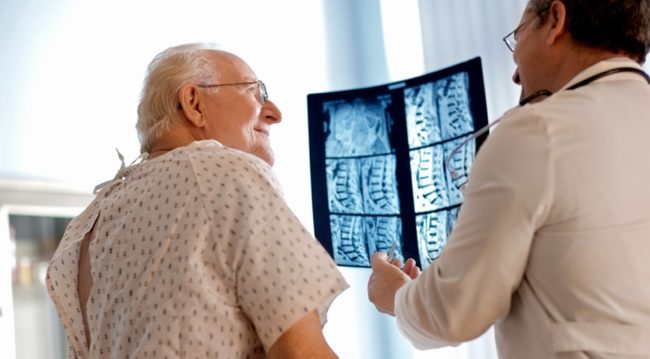
Then an examination is carried out to determine possible violations:
Pain in the left side of the back is a consequence of impaired functioning of the body, and to identify it you need to undergo a comprehensive examination.
Diagnosis of the disease
To ensure the correctness of the diagnosis, each specialist is obliged to conduct a thorough examination of the patient. It is mandatory, and treatment without this clause is not prescribed.
This may include:
- anamnesis;
- examination, including palpation of the chest;
- X-ray examination;
- blood test (for herpes);
- electroneurography;
- CT (computed tomography) or MRI (magnetic resonance imaging);
- general blood and urine analysis (if lumbar pain is present).
Initially, the doctor talks with the patient and finds out all the symptoms from his words, trying to find out the cause of the disease. Then he carefully examines the chest area and probes the painful area.
This examination is significant and very often additional studies are not required. But in a difficult situation, if the specialist still has any doubts, he prescribes a number of additional studies for the person.
X-ray examination excludes pneumonia, the presence of a cyst, or tuberculosis. You should undergo it if the symptoms include cough, weakness, shortness of breath and other signs unusual for neuralgic diseases.
Electroneurography will help provide a quantitative and qualitative assessment of the damaged nerve. Diagnoses a wide range of diseases accompanied by nerve damage. Detects nerve damage that occurs as side effects of other diseases, a consequence of alcoholism, renal failure, etc.
Computed tomography or magnetic resonance imaging helps to identify various neoplasms and diagnose various injuries and disorders. CT is a simplified procedure and differs from MRI in its more affordable cost.
In addition to this examination, the doctor may resort to additional differential diagnostics. Pain on the right side can sometimes mean other, more serious diseases. Therefore, the doctor must rule out the presence of pleurisy, pneumonia, hepatitis, inflammation of the gastric mucosa, peptic ulcer, etc.
When you need urgent help
Back pain on the left sometimes develops after increased stress or prolonged time spent in an uncomfortable position as a result of muscle weakness. Such reasons do not pose a threat to the health and life of the patient, and when changing the daily routine and strengthening the spinal muscles, they disappear completely.
But there are conditions that require urgent medical intervention. If there is pain in the left side of the back, combined with other symptoms, you should immediately call an ambulance:
- pronounced pain in the epigastrium and lower abdomen;
- high temperatures;
- weakness, the patient is unable to rise independently;
- urination and defecation disorders;
- sudden weight loss for no apparent reason;
- burning under the left rib and in the sternum.
Diagnosis of intercostal pinching on the right
The first and most basic diagnostic method for any attending physician is the analysis of general symptoms identified directly by the patient. It is also necessary to palpate the intercostal zone and the places where pain occurs. In most cases, these steps are sufficient to make an accurate diagnosis. However, in cases where the symptoms are vague, the doctor uses additional diagnostic tools:
- to exclude nerve damage, electroneurography is performed;
- hernias and tumor formations are excluded using CT and MRI;
- The integrity of the bone tissues of the chest and spine is checked using x-rays.
If there is any doubt about the etiology of the disease, as well as in case of extensive pain throughout the thoracic region and lower back, the doctor will prescribe a general blood and urine test. The same procedure is used when it is necessary to exclude various infections.
First aid
For sharp, unbearable pain in the back of the back that appears as a result of injury or heavy physical exertion, you can take a drug with an analgesic effect (Analgin, Ibuprofen, Ketorol).
If the pain is caused by a disturbance in the functioning of the heart, you should call an ambulance and take nitroglycerin in a dosage of one tablet under the tongue for resorption.
Pain in the back can bother women before their period. In this case, it is recommended to take an antispasmodic drug (Spazmalgon). Taking No-shpa will help eliminate spasms during inflammation of the digestive and urinary organs.
For diseases of internal organs, treatment is prescribed by the doctor depending on which organ is affected.
If the problems are muscle weakness, musculoskeletal disorders and certain neurological diseases, the following treatment methods are used:
- physiotherapeutic treatment (ultrasound waves, laser radiation, electrophoresis, exposure to magnetic fields);
- therapeutic massage - at first, movements when massaging muscles are performed smoothly and easily, after which more intense rubbing and kneading are used; For a warming effect, use a special massage cream or vegetable oils;
- acupuncture - using needles to apply pressure to points responsible for the functions of internal organs; performed by trained specialists; yoga classes – regular exercises help strengthen the back muscles, improve their elasticity, strengthen the immune system and improve overall health;
- therapeutic exercises - to reduce the load on the spine, you should perform daily, simple exercises: bending your back forward, backward and to the sides; standing on all fours, bend your back down and arch it up; clasping your hands behind you in a lock, slowly bend down; align your arms at the seams and make circular movements with both shoulders at the same time;
- Regular swimming and daily walks over long distances will help strengthen your muscles.
Treatment
The attending physician, first of all, is obliged to eliminate the cause that led to the occurrence of right-sided intercostal neuralgia. Also, treatment is always different due to the individual characteristics of each patient.
The following may be prescribed by a neurologist:
- painkillers in tablets or capsules that reduce sensitivity;
- injections that relieve acute pain;
- chondroprotectors , restoring cartilage and bone tissue;
- ointments , relieve muscle pain;
- physiotherapeutic procedures and massage, relieving muscle tension and normalizing blood circulation;
- rubbings that help eliminate pain, tingling and burning.
In addition to the main treatment, additional auxiliary therapy is carried out, this includes exercise therapy and physiotherapeutic procedures such as UHF, acupuncture, electrophoresis, iontophoresis, magnetic therapy and ultrasound.
Such procedures have a good effect on the nervous system, eliminate deep muscle imbalances and remove pain from the back. They should only be carried out by a medical professional in a specially equipped room.
The doctor must tell you about the rules that the patient must adhere to during treatment. If you do not listen to the doctor’s recommendations, treatment may take a long time or may not give positive results at all.
The patient is obliged:
- Follow bed rest . You cannot use a soft mattress or a mesh bed. The place should be solid and level. It is advisable to place a special shield under the mattress.
- Warm the right side. To do this, dry heat is used in the form of a towel heated with an iron; you can also wrap the area with a woolen scarf or handkerchief. If you have a heating pad, it is advisable to use it.
- Do not skip taking medications that have an analgesic and sedative effect.
- Apply mustard plasters to the paravertebral area.
- Rub in anti-inflammatory ointments, while doing this with massage movements.
- Limit physical activity , move less.
- Attend regular physiotherapy and exercise therapy.
- Go for massage . But it is indicated only during the period when there is no pronounced pain syndrome.
- Avoid tight underwear .
- Avoid stressful situations, receive only positive emotions.
- Avoid alcoholic drinks.
In case of unbearable pain, a novocaine blockade is done, injected directly into the area of localization of intercostal neuralgia.
A mandatory point is the elimination of edema, which is relieved with diuretics and venotonics. Medications in combination with muscle relaxants will help relieve inflammation, eliminate spasms and other pathological processes; they are used in the form of tablets, injections, ointments and suppositories.
To improve blood circulation and warm up muscles, Apisatron is prescribed. With restless sleep and constant tension, sedatives come to the rescue. B vitamins can improve the nutrition of affected nerves; Combilipen is most often prescribed.
Prevention of back pain
Diseases can be prevented by maintaining a healthy lifestyle, giving up alcohol and cigarettes, increasing sleep and paying attention to physical activity. An important factor in preventing pain is correct posture and even distribution of the load. Therefore, when working at a computer, it is necessary to ensure correct posture: the lower back should be pressed tightly against the back of the chair (chair), the legs should be located next to the blades of the chair.
When lifting heavy objects, such as grocery bags, it is recommended to first squat down and only then pick up the bags, distributing them evenly in both hands.
Regardless of the intensity and duration of painful manifestations, it is necessary to seek advice from a treating specialist, undergo a comprehensive examination and prescribed treatment. In case of acute pain accompanied by other clinical manifestations, you should call an ambulance. Any delay in the event of severe pain symptoms can cost the patient’s life.
Rehabilitation period
The rehabilitation period includes various physical therapy, massage, vitamin supplementation and maintaining a healthy lifestyle.
The following sessions are common in the form of physiotherapy:
- laser therapy;
- acupuncture;
- electrophoresis;
- ultraviolet irradiation;
- massage.
Massage can help relieve muscle spasms and improve blood circulation, but it should only be performed by a qualified professional and at a specific time.
The neurologist must warn that such actions are not carried out in the acute phase of the disease, since pressure on the painful area will increase blood flow and in this case it will only get worse. Therefore, a massage course is prescribed specifically during the rehabilitation period.
It is imperative to take high doses of vitamin B. They will restore the nerve sheath and make it more stable.
On this topic
- Neuralgia
What is the danger of a pinched nerve in the leg?
- Natalia Sergeevna Pershina
- May 25, 2020
Under no circumstances should you drink alcoholic beverages; it is advisable to quit smoking and not be nervous.
In addition to all of the above procedures, the following are used:
- paraffin and ozokerite applications;
- mud therapy;
- baths with radon and hydrogen sulfide;
- swimming;
- exercise therapy;
- traditional methods.
Ozokerite and paraffin applications on the chest help warm up the sore spot, eliminate all remaining discomfort, speed up recovery and increase immunity.
You can use mud therapy and baths with radon and hydrogen sulfide. Mud therapy promotes complete relaxation of muscles, calms, stimulates organ function, and normalizes the functioning of the circulatory system. Baths with hydrogen sulfide and radon increase immunity, stimulate the circulatory system, have an anti-inflammatory and sedative effect, restore organ function, and promote a speedy recovery.
An excellent option for recovery would be to take up swimming and continue doing physical therapy. Of course, these should be special therapeutic and recreational classes with an instructor.
